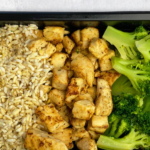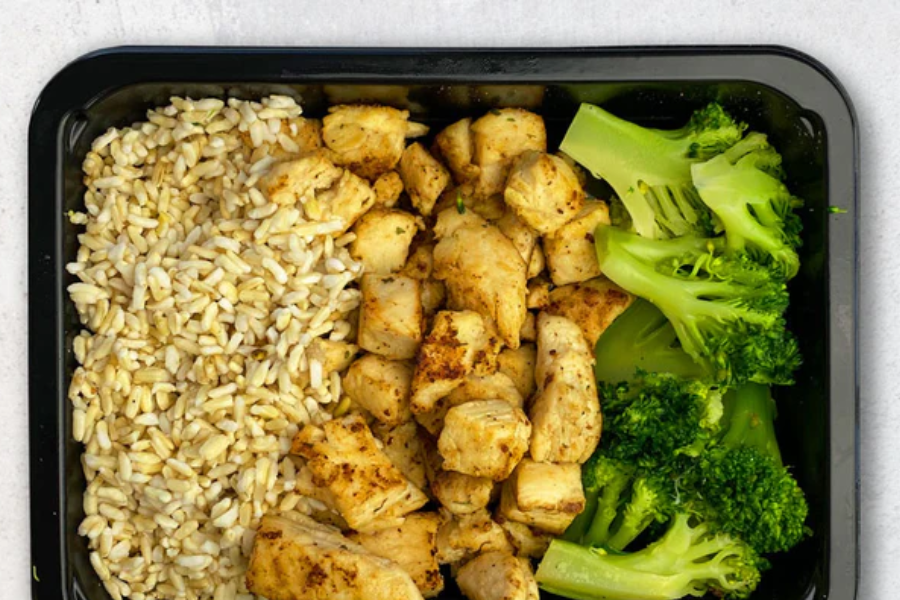Is Chicken Rice Healthy? A Comprehensive Guide to Singapore’s Iconic Dish
Singapore’s Chicken Rice is a beloved dish that holds a special place in the hearts (and stomachs) of locals and tourists alike. Known for its savory taste, fragrant aroma, and cultural significance, this dish is undeniably a culinary treasure. However, one question often arises: Is Chicken Rice healthy?
This guide explores the nutritional content of Chicken Rice, compares its variations, and offers tips to enjoy this flavorful dish without compromising your health goals.
Understanding the Nutritional Content of Chicken Rice
To assess the healthiness of Chicken Rice, we need to examine its core components—chicken, rice, and accompanying sauces.
A Typical Serving of Chicken Rice
A standard serving of roasted Chicken Rice with skin, including rice and chili sauce, weighs about 382 grams and contains:
- 607 calories
- 25 grams of protein
- 23 grams of fat
- 8.7 grams of saturated fat
- 47 mg of cholesterol
- 1,387 mg of sodium
These figures indicate that while the dish is rich in protein, it also contains significant amounts of fat, sodium, and calories, which could pose health concerns if consumed excessively.
Burning Off Chicken Rice Calories
For a person weighing approximately 70 kg, burning off the calories from one serving of Chicken Rice would require:
- 1.5 hours of stair stepping
- 1.5 hours of dancing
- 1 hour of rope jumping
Clearly, indulging in Chicken Rice isn’t calorie-neutral, but understanding its components can help you make informed choices.
Roasted Chicken vs. Steamed Chicken: The Calorie Comparison
The type of chicken you choose significantly affects the calorie count and nutritional value of your meal.
Roasted Chicken
Roasted Chicken Rice features tender, flavorful chicken seasoned with spices and roasted to perfection. The skin, while adding to the taste, is high in fat and calories.
- Calories: 221 per 100 grams (including skin)
Paired with fragrant rice cooked in chicken broth and enhanced with chili and soy sauces, roasted Chicken Rice is undeniably indulgent but calorie-heavy.
Steamed Chicken
Steamed Chicken Rice offers a lighter alternative. The chicken is gently steamed, preserving its natural juices and tenderness. Removing the skin further reduces the calorie count, making it a healthier option.
- Calories: 165 per 100 grams (skin removed)
While steamed chicken lacks the bold flavors of its roasted counterpart, it is lower in fat, making it a preferred choice for health-conscious diners.
The Role of Rice in Chicken Rice
Chicken Rice wouldn’t be complete without its fragrant rice, which is typically cooked with chicken fat, garlic, and ginger for added flavor. However, this preparation method significantly increases its calorie content.
- Chicken Rice: Approximately 434 calories per bowl
- Plain White Rice: About 200 calories per bowl
Switching to plain white rice can reduce calorie intake, but some argue that it detracts from the authentic Chicken Rice experience.
Healthier Ways to Enjoy Chicken Rice
While Chicken Rice is inherently calorie-dense, you can make modifications to enjoy it in a healthier way without sacrificing too much flavor.
1. Skip the Skin
The chicken skin is a primary contributor to the dish’s fat and calorie content. Opting for skinless chicken significantly reduces these values while retaining the dish’s essence.
2. Control Portion Sizes
Portion control is key. Opt for smaller servings of both chicken and rice to enjoy the dish without overindulging. Pair your meal with a side of vegetables for added nutrition and satiety.
3. Use Sauces Sparingly
The chili, soy, and dark sauces that accompany Chicken Rice are packed with sodium and calories. Using these condiments sparingly allows you to enjoy their flavor without overloading on salt and calories.
4. Avoid Drinking the Soup
Chicken Rice is often served with a side of flavorful soup. While delicious, the soup can contain additional calories and sodium. Skipping the soup is an easy way to cut back on unnecessary extras.
5. Opt for Steamed Chicken
Whenever possible, choose steamed chicken over roasted. Removing the skin from steamed chicken further reduces calories, making it a more diet-friendly option.
Nutritional Benefits of Chicken Rice
Despite its calorie content, Chicken Rice does offer some nutritional benefits:
- High in Protein: Chicken is an excellent source of lean protein, essential for muscle repair and overall health.
- Rich in Flavors: Ingredients like garlic, ginger, and chili not only add taste but also offer anti-inflammatory and digestive benefits.
- Customizable: The dish is versatile, allowing diners to adjust components to suit their dietary needs.
Balancing Chicken Rice in a Healthy Diet
Enjoying Chicken Rice occasionally as part of a balanced diet is perfectly fine. Here’s how you can incorporate it without derailing your health goals:
- Pair it with a side salad or steamed vegetables to increase fiber intake.
- Drink water or unsweetened tea with your meal to avoid extra calories from sugary beverages.
- Limit consumption to once a week or during special occasions.
Final Thoughts
Chicken Rice is undoubtedly a culinary masterpiece, blending flavors and textures into a dish loved by many. While it may not be the healthiest option due to its calorie and fat content, making mindful choices—like opting for steamed chicken, skipping the skin, and moderating portions—can help you enjoy this iconic dish without guilt.
By understanding the nutritional aspects and exploring healthier modifications, you can savor Chicken Rice as part of a balanced lifestyle, keeping both your taste buds and health in harmony.











